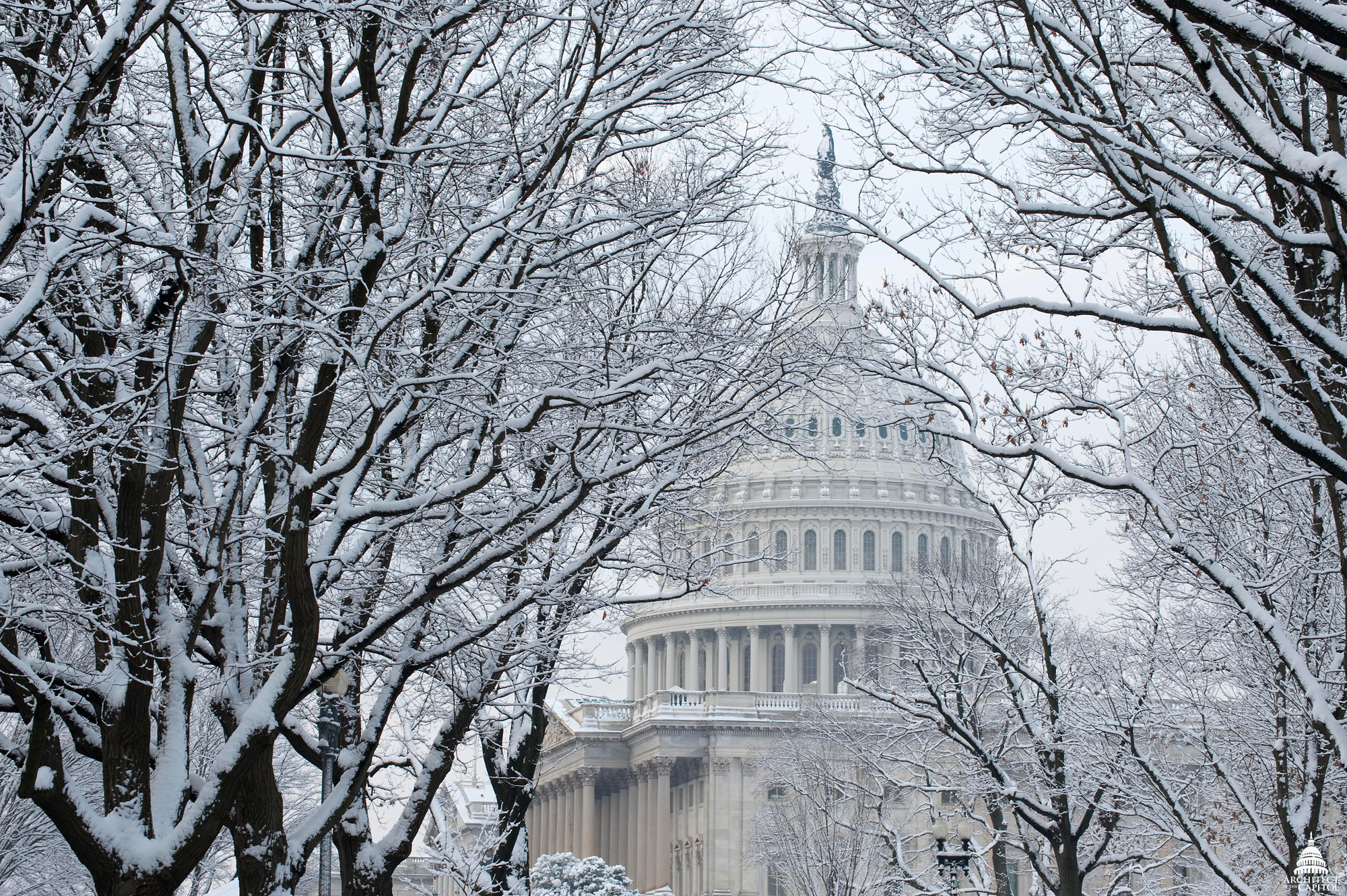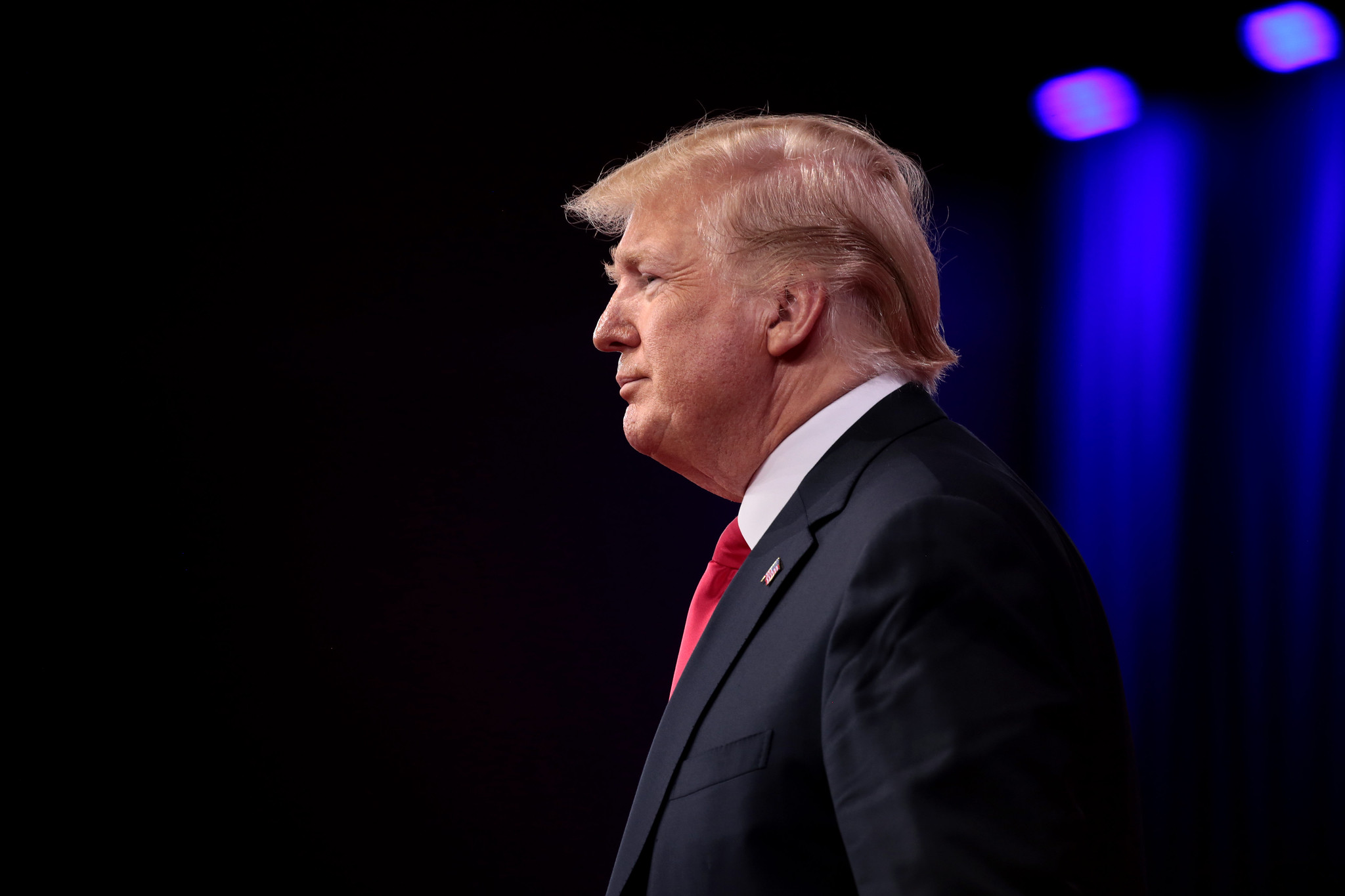The Constitutionality of Trying a Former President Impeached While in Office
Constitutional structure, founding-era understanding and later precedents all reinforce the imperative of employing impeachment to protect constitutional government—even if the president’s term has already ended.

Published by The Lawfare Institute
in Cooperation With

In his answer to the article of impeachment charging him with inciting insurrection, former President Trump has claimed that the Senate may not constitutionally try, convict and disqualify him from future federal office because, although he was impeached while still the president, his term has now expired. Recently on Lawfare, Philip Bobbitt lent his considerable prestige to the proposition that the Constitution bars such a trial. I find Bobbitt’s arguments unpersuasive. Because the question is an important one, I explain my disagreements below.
So far as I can see, Bobbitt’s position rests primarily on a colorable—but tenuous—argument from the text of the Constitution’s impeachment clauses. Moreover, he largely ignores or unfairly discounts powerful contrary arguments based on constitutional structure, founding-era understanding, subsequent applications of the impeachment clauses in American history and the prudential imperative of employing impeachment to protect constitutional government.
Arguments From Constitutional Text
Consider first the text of the Constitution. Article I confers on Congress the power of impeachment and delimits the penalties available upon conviction. Article I, Section 2, Clause 5 grants “the House of Representatives … the sole Power of Impeachment,” while Clause 6 grants the Senate “the sole Power to try all Impeachments.” Clause 7 states: “Judgment in Cases of Impeachment shall not extend further than to removal from Office, and disqualification to hold and enjoy any Office of honor, Trust or Profit under the United States: but the Party convicted shall nevertheless be liable and subject to Indictment, Trial, Judgement and Punishment, according to Law.”
Article II of the Constitution, which governs the executive branch, says, in Section 4, that “[t]he President, Vice President and all civil Officers of the United States, shall be removed from Office on Impeachment for, and Conviction of, Treason, Bribery, or other High Crimes and Misdemeanors.”
The text does not directly address the question of whether a president, a vice president or another civil officer can be impeached by the House while in office but tried, convicted and sanctioned by the Senate after leaving office. (Nor does it address the related question of whether a person who was once a president, a vice president or another civil officer can be impeached by the House after leaving office and thereafter tried, convicted and sanctioned by the Senate. But since President Trump was impeached while in office, this post will focus on the scenario at hand.)
Bobbitt contends that because Article II says an impeached and convicted president “shall be removed from Office,” a former president who, by definition, can no longer be removed therefore cannot be impeached, tried or convicted in the first place.
This is a facially colorable reading of Article II, Section 4, at least if that section is read without consulting other impeachment language in the Constitution. But if one considers all of the Constitution’s impeachment provisions and their placement within the structure of the document, the constitutional argument against the propriety of a Senate trial of President Trump (or any former president in an analogous position) becomes decreasingly plausible.
When Bobbitt lists the impeachment clauses in the Constitution, he places the single impeachment provision of Article II first, giving it implicit precedence over the multiple impeachment clauses of Article I. The order matters, I think. Putting the Article II clause first subtly suggests that this oddly phrased passage, rather than the straightforward language of Article I, is the primary source for understanding the scope of Congress’s impeachment power.
Considered in what I think to be the more logical order, the Constitution begins in Article I with a general grant of power to Congress. It declares that impeachment is the business of Congress—to initiate, to try and to punish—but restricts the universe of possible penalties to two: removal and disqualification. Next, Article II enumerates the officers subject to impeachment, defines the standard for impeachable conduct as “treason, bribery, or other high Crimes and Misdemeanors,” and mandates removal as a minimum consequence of conviction.
Read as part of this more natural sequence, the removal language of Article II places no necessary restriction on the class of officials who may be impeached, convicted and penalized. Rather, it requires that the Senate remove an official upon conviction, allowing that body no discretion in the matter, but leaving disqualification—the other penalty already enumerated in Article I—as an additional, but discretionary, consequence. So conceived, the impeachment clauses present no barrier to impeaching, trying, convicting and then disqualifying an officer who committed “high crimes and misdemeanors” while in office but has since left office—whether by resignation or expiration of his term—at some point prior to the Senate’s determination of a proper penalty. For an officer who has vacated his or her post, removal may be moot, but disqualification remains available.
How then is one to decide between these two readings? Bobbitt offers two textual arguments in favor of his.
The first is what I might call an appeal to illusory simplicity. He declares that “[t]here is no authority granted to Congress to impeach and convict persons who are not ‘civil officers of the United States.’ It’s as simple as that.” But, of course, no one has argued that Congress has the power to impeach anyone other than the president, vice president, or other civil officers. Bobbitt implies that because impeachment is limited to this class of official, the person impeached must be and remain such an official at every stage of the impeachment process. But the Constitution is silent on that point, and determining its meaning is hardly “simple.”
Bobbitt next claims that the “sole constitutional grounds” for a Senate trial at “which impeachment penalties can be imposed” are “commission of bribery, treason, or other high crimes and misdemeanors by a civil officer leading to his removal” (emphasis added). This formulation conflates the behavioral grounds for impeachment—treason, bribery, or other high crimes and misdemeanors—with one of the penalties for conviction of such behavior, in order to support a conclusion that imposition of the penalty is a prerequisite, a necessary “ground,” for conducting any trial at all.
But a penalty is neither an element of an offense nor a “ground” for asserting jurisdiction; it is a consequence of conviction after trial by the body possessing jurisdiction. Bobbitt argues that a person whose circumstances are such that he cannot be made to suffer a mandatory penalty therefore escapes jurisdiction altogether. But that claim runs contrary to the way the law normally thinks about civil or criminal wrongs and penalties.
Consider a con man convicted under a fraud statute that provided, upon conviction, for mandatory forfeiture of all the proceeds of the crime plus a term of imprisonment imposed at the discretion of the judge. Would anyone think it sensible to conclude that the con man would be immune from prosecution and the possibility of prison if, before his trial, he blew all the loot in Vegas?
Or imagine a law passed in a pastoral society that said: “A goatherd who steals a goat from the flock he is tending shall, upon conviction, be removed from the owner’s employment. Judgment in cases of goat theft shall extend no further than removal from current employment, and disqualification from ever again working in the livestock industry.” Suppose that, after apprehension, but before trial, the goat thief was fired from his job. Would it make sense to argue that the thief therefore could no longer be tried or, if convicted, banned from the herding trade for the protection of a society for whom honest stewardship of livestock is central to survival? That, in effect, is Bobbitt’s textual argument about the application of the impeachment clauses to presidents entrusted with stewardship of democracy.
Bobbitt’s reading of the text is, in my view, further undercut by former Judge Michael McConnell’s recent exegesis. McConnell notes, first, that there can be no argument against the legitimacy of Trump’s impeachment by the House, since he was president when impeached and, second, that Article I, Section 2, grants the Senate “the sole Power to try all Impeachments.” As McConnell says, “The key word is ‘all.’ This clause contains no reservation or limitation. It does not say ‘the Senate has power to try impeachments against sitting officers.’ Given that the impeachment of Mr. Trump was legitimate, the text makes clear that the Senate has power to try that impeachment.”
Arguments From Constitutional Structure and Purpose
After treating the text, Bobbitt moves on to what he calls a “structural” claim. He says that, if disqualification is an alternative penalty that may be imposed even on someone no longer subject to removal, that must mean that the House could commence an impeachment after an official had left office. He then, as Oedipus says of the Oracle at Delphi, “holds up before [our] eyes a future great with pain, terror, disaster.” Congress, he worries, will impeach and convict former officers to prevent those officers from “running against them.” Or worse, the House will impeach current officials and then “hold back the referrals to the Senate, perhaps for years, until springing them to prevent the former officials from seeking office.”
In the 230 years since the impeachment clauses were written, there has never been a case remotely like either of these imagined horrors. Given the universally recognized difficulty of bringing any impeachment to a successful conclusion, the idea that Congress would run amok as postulated is fantasy.
The more fundamental problem with Bobbitt’s “structural” argument is that it isn’t really a structural argument at all. A structural argument seeks the meaning of a contested passage of the Constitution by considering its place and function within the overall structure of the Constitution, with particular attention to other passages that address the same objective.
The impeachment clauses cannot be read in isolation. They must be interpreted in their proper context as one part of the Framers’ resolution of the problem of how to design, and control, the newly invented office of president. The Framers worried that the solo occupant of this office might endanger constitutional government through corruption, gross incompetence or overweening personal ambition. Accordingly, they wrote into the Constitution a web of legislative and judicial constraints on the office of the presidency. They also included four mechanisms for dealing with the person of an incompetent or dangerous president: quadrennial elections, removal from office by impeachment, disqualification from future office by impeachment and the assurance that even impeached officers remain amenable to criminal liability in the ordinary courts.
All of these mechanisms are part of an integrated structure. Elections are the primary means of addressing the ordinarily inadequate president. Removal by impeachment is available for the president whose sins are sufficiently egregious and pressing that waiting for the next election may be imprudent. Ensuring that presidents are punishable by law keeps presidents from becoming kings and provides some deterrence of overtly criminal behavior in office. Finally, disqualification is not merely some throwaway afterthought, but occupies a key place among the constitutional devices crafted to protect the republic from a dangerous president.
The dangers posed by a president who is merely personally corrupt or grossly incompetent can be remedied by removing such a person from office through election or impeachment. Likewise, a president whose objectionable misconduct is of the conventionally criminal kind can, perhaps, be deterred by fear of prosecution. But a person whose danger to the constitutional order lies in his aspiration to subvert or overthrow democracy might not be defanged effectively by either departure from office or fear of prosecution.
As I have described elsewhere, by virtue of their classical educations and their pre-Convention study of prior republics, the Framers were especially leery of a particular kind of would-be autocrat—the “demagogue”—who might gain power and overthrow republican government by appeals to the passions of the masses. The danger posed by a person of that kind, even if once expelled from office, persists so long as he retains the potential to overwhelm rational opposition by inflaming popular sentiment and so too returning to power. Thus, elections, removal and even prosecution do not wholly address the problem of the aspiring populist autocrat. The Framers filled the resultant gap in their constitutional structure by also including the discretionary remedy of permanent disqualification from national office.
To say that one is interpreting a constitutional passage “structurally” is to say that, if presented with two textually plausible readings, one should prefer the reading that best promotes the evident aims of the constitutional structure taken as a whole. Any proper “structural” reading of the impeachment clauses should give maximum effect to their overall purpose of protecting constitutional order against dangerous presidents, while avoiding artificially narrow constructions that defeat that end.
I interpret the Constitution to mean that a president who actively sought to overturn the results of a free and fair election to maintain himself in office as an unelected autocrat—and who has publicly proclaimed an intention to return to the presidency—can, having been impeached while in office by the House, be thereafter tried, convicted and disqualified from future office by the Senate. Bobbitt says the Constitution prohibits the completion of this exercise in republican self-protection because the president sought to overthrow democracy late in his term and the Senate didn’t start his trial fast enough to allow both removal and disqualification. It’s hard to see how that squares with the structure of the Constitution or the evident purposes of its designers.
Arguments From Later Precedent
Beyond questions of text and structure, Bobbitt cites little evidence to support his position. Like all of us who have discussed this subject, he mentions two prior American impeachments: first, the case of Sen. William Blount, who in 1797-1798 was impeached by the House, expelled from the Senate, and then tried by the Senate, in that order, and, second, the case Secretary of War William Belknap, who in 1876 was both impeached and tried after he left office. But those cases hardly buttress Bobbitt’s position.
In both cases, the Senate held a trial after the impeached officer left office, either by resignation (Belknap) or expulsion (Blount). In Belknap’s case, the Senate expressly considered the question of whether it retained jurisdiction and voted by a count of 37-29 that it did. In both cases the defendants were acquitted (for a variety of reasons), but in neither did the Senate find its own proceedings contrary to the Constitution. Although the Blount and Belknap cases are not definitive proof of senatorial impeachment jurisdiction over former officials, they are better precedent for such jurisdiction than against it.
Perhaps for that reason, Bobbitt proffers the puzzling contention that the fact that Congress chose not to impeach Richard Nixon after his resignation is evidence for the proposition that it could not have had it wished. There is no evidence of which I am aware that congressional abstention in Nixon’s case was motivated to even the slightest degree by concerns over jurisdiction. In any case, an exercise of prosecutorial discretion not to charge crime is not evidence of lack of jurisdiction to do so.
Conclusion
Bobbitt concludes by insisting that his view amounts to “such a plain constitutional rule” that proceeding to trial against Trump would amount to “running roughshod over the Constitution.” And he even ends with the well-known quotation from A Man for All Seasons cautioning against cutting down all the laws to get at the Devil.
I have rather less confidence in the infallibility of my assessments of constitutional meaning. I cheerfully concede that my reading of the impeachment clauses is not the only possible one. But I also think the position that I, and the vast majority of other scholars with expertise in the field, have espoused is far stronger than Bobbitt’s. In the end, if the law, considered objectively and in full structural and historical context, was plainly designed to snare the very Devil who now confronts us and to protect the Republic from his future depredations, then the sound constitutional course—and the better part of wisdom—is to wield the law to achieve that purpose.




